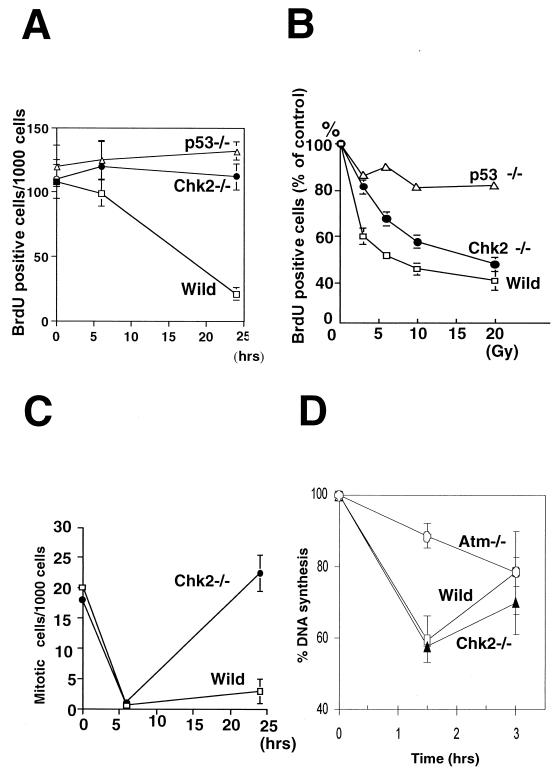FIG. 3.
Since the loss of Chk2 leads to suppressed apoptosis and cell cycle arrest in response to IR, one would expect to find a higher incidence of tumor formation in Chk2−/− mice, perhaps comparable to that in p53−/− mice. However, by age 1 year, Chk2−/− mice had not developed tumors of any kind. We speculate that tumors caused by the loss of Chk2 are either too rare to be detected or require a prolonged period to develop. We therefore challenged Chk2−/− mice with the chemical carcinogen DMBA, an agent that damages DNA and efficiently induces skin tumors (15, 40). More Chk2−/− mice than wild-type animals developed skin tumors in response to DMBA treatment (wild type versus Chk2−/−: 6 of 14 versus 12 of 14 at 25 weeks) (Fig. 4A

